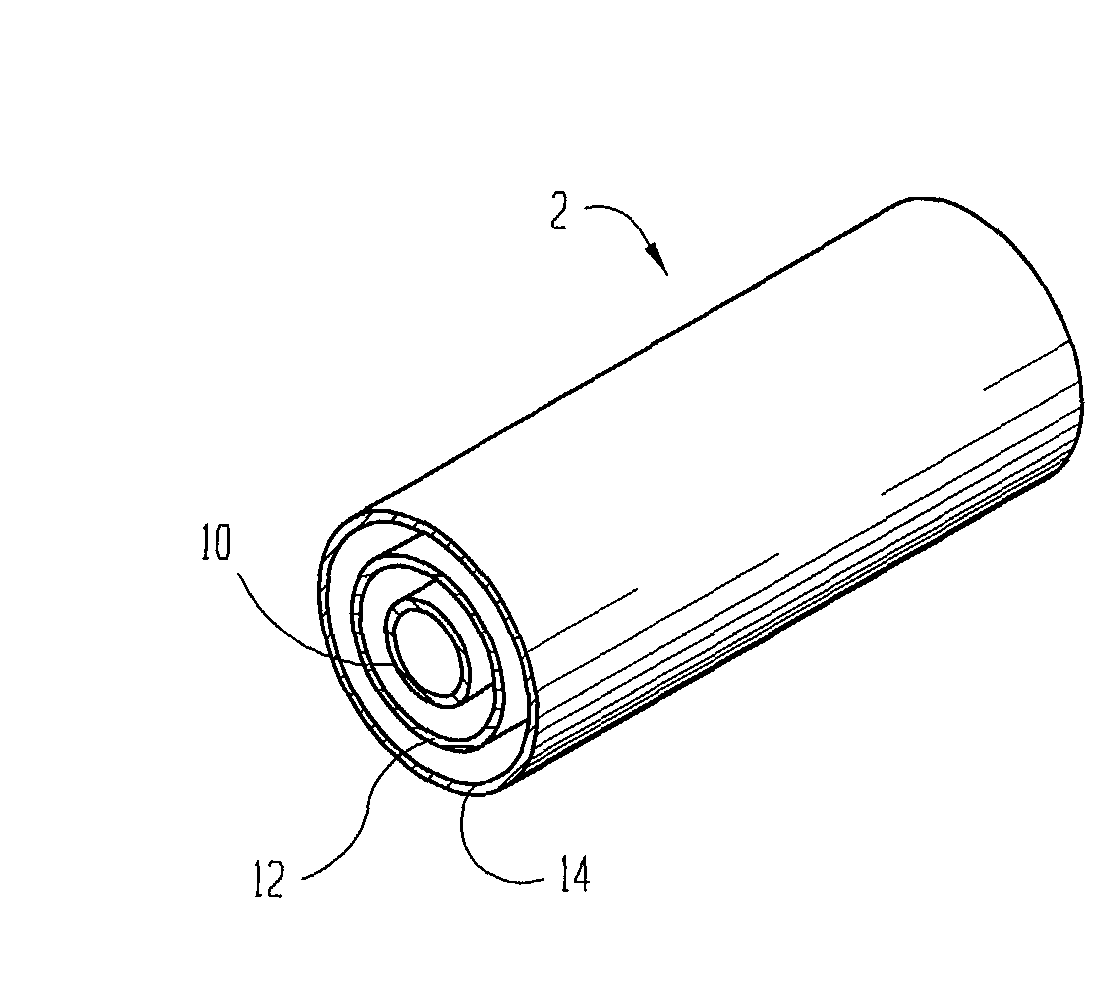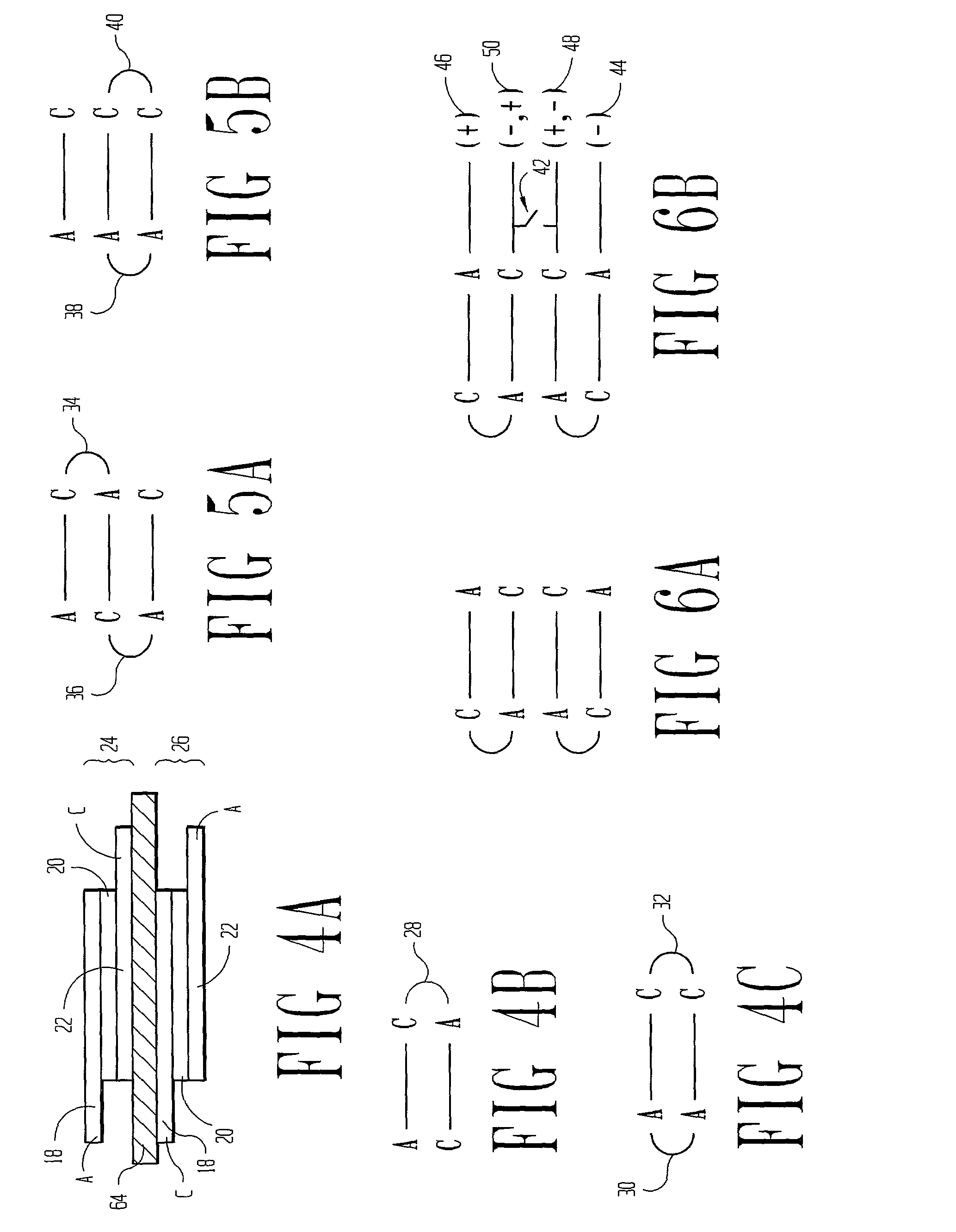Consecutively wound or stacked battery cells
a battery cell and stacked technology, applied in the field of batteries, can solve the problems of affecting the efficiency of battery cells,
- Summary
- Abstract
- Description
- Claims
- Application Information
AI Technical Summary
Benefits of technology
Problems solved by technology
Method used
Image
Examples
Embodiment Construction
[0012] The problems noted above are solved in large part by a consecutively wound or stacked battery system in which a plurality of devices are constructed by consecutively winding those devices on top of each other to produce a multiple device system in a single integral unit. The multiple devices could be battery cells, fuel cells, capacitors and the like. More particularly, the preferred embodiments are directed to consecutively wound lithium battery cells having solid polymer electrolyte, each battery cell separated by an insulating layer that extends beyond an anode or cathode layer in each of the battery cells. Once the requisite number of cells are wound into the consecutively wound system, the axial or rolled ends of the consecutively wound system are preferably coated or shooped with a conductive material. A portion of this conductive material is preferably removed by brushing such that the conductive material cannot provide continuity from one cell to another. Thus, each b...
PUM
| Property | Measurement | Unit |
|---|---|---|
| diameter | aaaaa | aaaaa |
| diameter | aaaaa | aaaaa |
| diameter | aaaaa | aaaaa |
Abstract
Description
Claims
Application Information
 Login to View More
Login to View More - R&D
- Intellectual Property
- Life Sciences
- Materials
- Tech Scout
- Unparalleled Data Quality
- Higher Quality Content
- 60% Fewer Hallucinations
Browse by: Latest US Patents, China's latest patents, Technical Efficacy Thesaurus, Application Domain, Technology Topic, Popular Technical Reports.
© 2025 PatSnap. All rights reserved.Legal|Privacy policy|Modern Slavery Act Transparency Statement|Sitemap|About US| Contact US: help@patsnap.com



